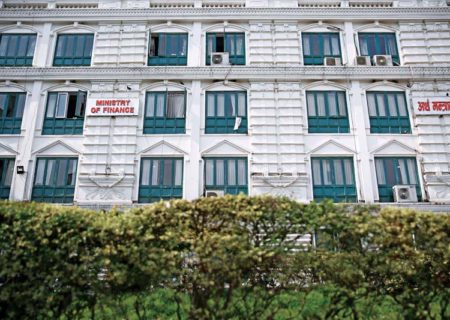FinMin not banking on NRB guv!
Kathmandu, May 3
Probably for the first time in the country’s history, the Ministry of Finance has excluded the governor of Nepal Rastra Bank — the central regulatory and monetary authority — from the budget formulation team.
The central bank governor, who is one of the members of the resource committee led by the vice-chairman of the National Planning Commission and adviser to the Ministry of Finance, has been dramatically excluded from the budget formulation team.
Since the appointment of Yubaraj Khatiwada — who had earlier served as the central bank governor — as the finance minister, incumbent Governor Chiranjibi Nepal has been seen in the same forum with the finance minister only once -- during the mid-term review of the budget at the Ministry of Finance.
On all other occasions when both the finance minister and central bank governor were invited, Deputy Governor Chinta Mani Siwakoti used to represent the central bank in public forums.
The story does not end here.
Yesterday, Finance Minister Khatiwada, while addressing the launch ceremony of joint operation of government-owned Rastriya Banijya Bank and NIDC Development Bank after the former acquired the latter, had publicly criticised the central bank for weak regulation and supervision of the banking sector and growing indiscipline in the financial sector.
The finance minister had even warned that there was an authority above the central bank, which was monitoring its activities.
Similar to past coincidences, the NRB governor was out of town and was unable to attend the commencement of joint operation of Rastriya Banijya Bank and NIDC, the acquisition process of which was initiated following the decision of the Cabinet, as both were state-owned banks.
Nepal, however, tried to dismiss concerns about any differences between him and the finance minister, defining his relationship with Khatiwada as ‘cordial’.
However, the finance minister’s actions — keeping the governor out of the budget formulation team and publicly criticising the role of the central bank — clearly demonstrate the underlying tensions between the two.
Excluding the central bank governor from the budget formulation team could even be interpreted as the finance minister dishonouring the central bank. Khatiwada, on more than one occasion, has proclaimed that during his tenure as the central bank governor he was the one who saved the country’s financial system, which was on the brink of collapse, through prudent regulatory norms.
Still, it cannot be denied that as the operator of the central treasury, the central bank governor should have been given due importance in the budget formulation. This is more so, as there is a general trend of setting the inflation target in the budget, which may not be reliable without consulting the NRB.
One prominent economist, requesting anonymity, said the clash between MoF and central bank could affect the effective execution of fiscal policy if the central bank tightens banks’ credit flow through monetary policy.
“For higher growth, the economy needs huge investment from the banking sector as well. However, the cynicism of the finance ministry is against our age-old practice.”
Finance Minister Khatiwada, who used to advocate autonomy of the central bank, has made a radical u-turn after he started exercising political power.
Sources say exclusion of the governor from the budget team is also due to political reasons, as the governor was appointed by the Nepali Congress government led by late Sushil Koirala, while Finance Minister Khatiwada does not want to be transparent in the budget formulation process and has instructed the ministry and National Planning Commission to keep the exercises on budget formulation a secret.
The federal government is preparing to submit the budget on May 29 in the Parliament.






